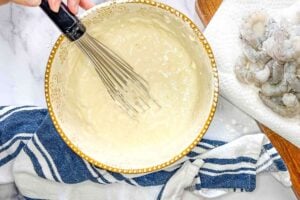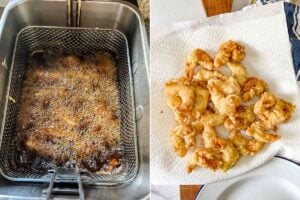Deep-Fried Shrimp
These deep-fried shrimp are perfect if you’re looking for something crispy and tasty. They’re great for a quick meal or when you have people over, and they’re super easy to make. Plus, they’re full of flavor every time you bite into them.
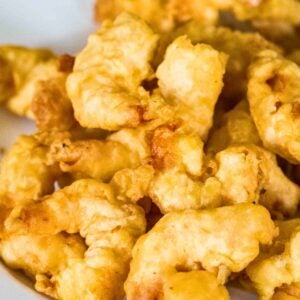
Equipment
- Deep fryer or Dutch oven
- Slotted spoon or frying basket
- Mixing bowl
- Whisk
- Paper Towels (for draining)
- Kitchen thermometer (to monitor oil temperature)
Ingredients
- 1 pound large fresh shrimp (about 20-25, peeled and deveined)
- 1 cup all-purpose flour
- ¼ cup cornstarch
- 1 teaspoon baking powder
- 1 teaspoon salt
- ½ teaspoon white pepper (or black pepper)
- 1 cup cold water
- 1 egg (lightly beaten)
- peanut oil or vegetable oil (enough for deep frying, about 2 to 3 inches deep)
Save This Recipe
You'll join my email list which you will love. And if you don't, unsubscribe in one click. ❤️
Instructions
- Prep the shrimp. Pat the shrimp dry with paper towels. Then, set up a deep fryer or Dutch oven by pouring in oil until it’s about 2-3 inches deep. Start warming up the oil to 350°F (175°C).

- Make the batter. Whisk together the all-purpose flour, cornstarch, baking powder, salt, and white pepper in a medium mixing bowl until fully combined. Slowly pour in the cold water and the lightly beaten egg, whisking until you get a smooth, slightly thin batter that lightly coats the back of a spoon.

- Coat and fry the shrimp. Holding the shrimp by the tail, dip each into the batter, making sure it is fully coated. Don't forget to let any excess batter drip off. Next, gently drop the battered shrimp into the hot oil. Avoid overcrowding the pot to make sure it is even cooking. Fry the shrimp for about 2 minutes per side until they turn golden brown and crispy.

- Drain the shrimp. Using a slotted spoon, remove the fried shrimp from the oil and place them on a plate lined with paper towels to absorb any excess oil.
- Serve and enjoy. Once all the shrimp are fried and drained, serve them immediately while they’re hot and crispy. Pair them with your favorite dipping sauce or add a squeeze of lemon for a fresh, tangy touch.
Notes
Nutrition
Something about munching on crispy, deep-fried shrimp satisfies me, and my kids love them too. Whether it’s a regular dinner night at my place, I have friends over, or I want to make something special that even my kids will enjoy, I know this recipe is a surefire hit.
The best part? I don’t need many ingredients and can whip it up quickly. Suddenly, I’ve got myself a dish that seems a bit special but easy to make any time. I also serve them with any dipping sauce we like, which is a fun and interactive meal for the kids when they prep the sauce.
A Newsletter you’ll love
Daily recipes from the farmhouse, Sunday meal plans, seasonal ideas, straight from my kitchen to your inbox.
I promise to keep your email address safe. Unsubscribe at any time
If you’re a fan of shrimp, you might want to try other versions, like this Easy Deep-Fried Coconut Shrimp. The sweet and savory coconut coating adds a tropical twist that’s just as easy to make at home!
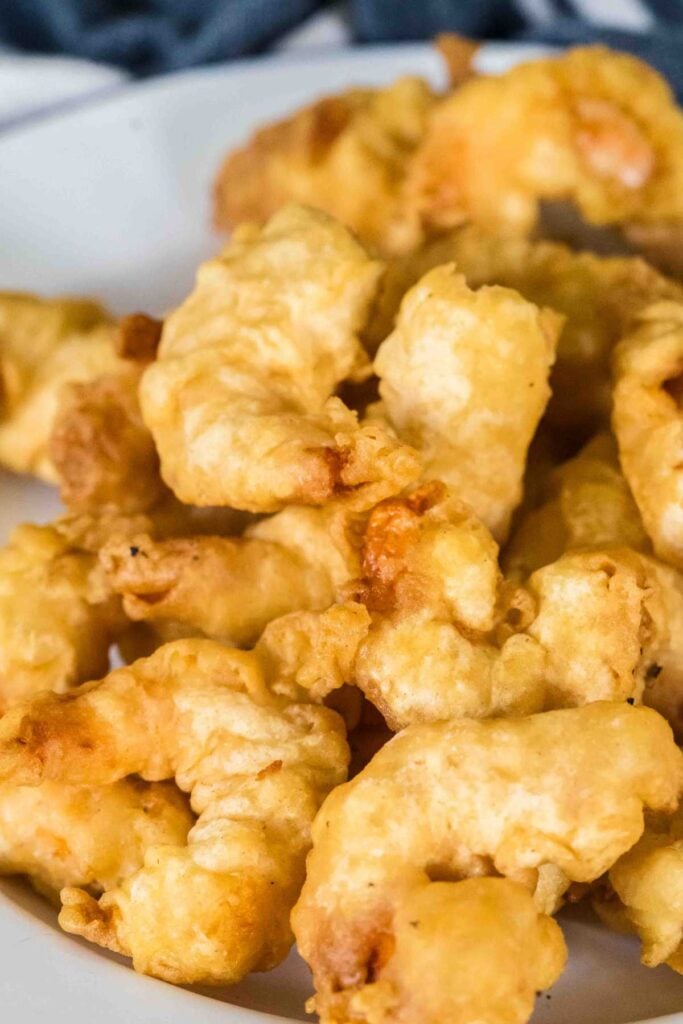
I’m sure you’ll enjoy it as much as I do.
Key Ingredients and Tools
Here’s a simpler version of the key things you’ll need to make the recipe work well and help you get crispy shrimp while making cooking easier.
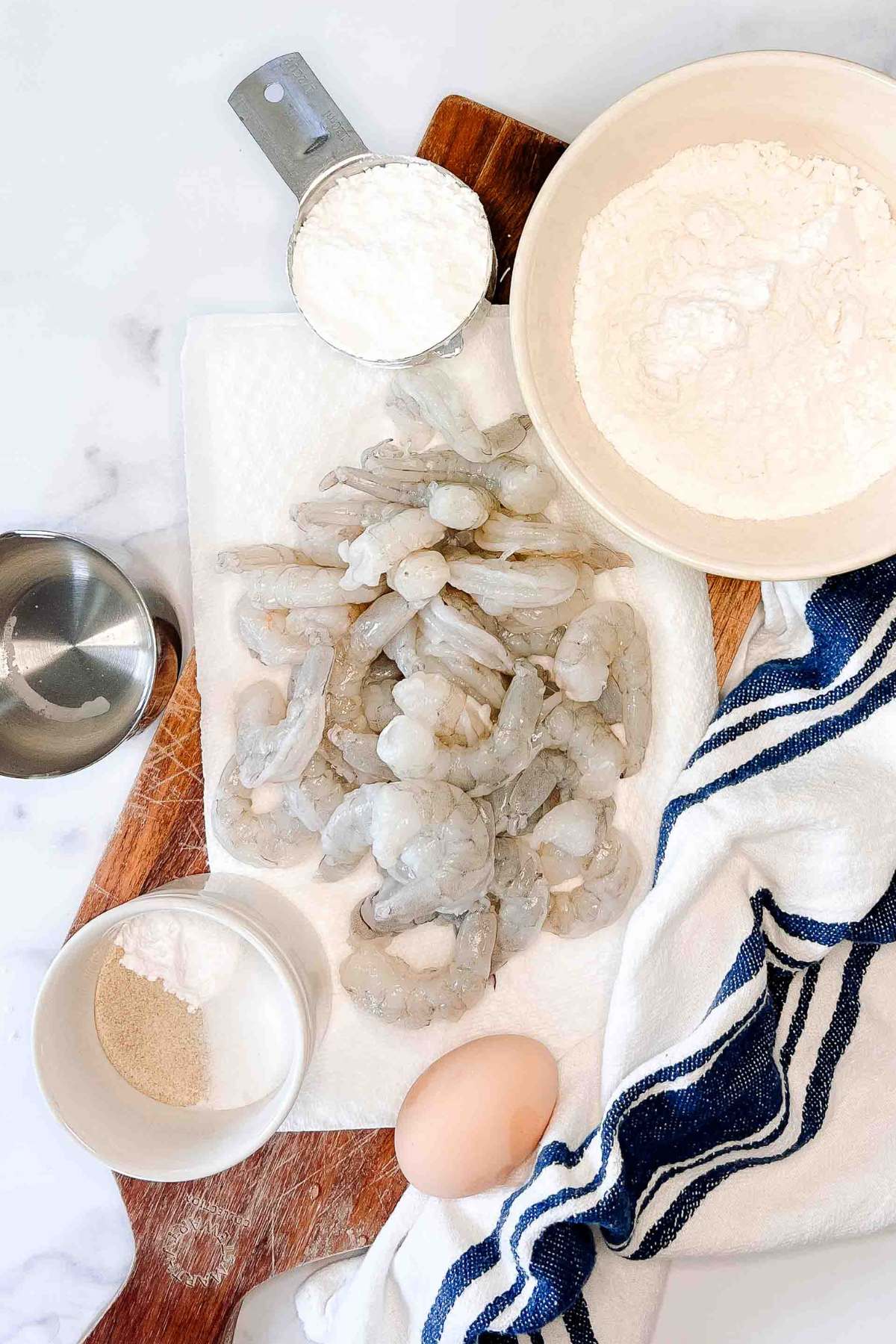
- Cornstarch: It’s important because it makes the batter light and crispy. It stops the coating from getting too thick and heavy, which is perfect for that nice crunch on the shrimp. If you’re out of cornstarch, use the same amount of rice or all-purpose flour for a bit of a thicker batter.
- Peanut oil: This oil is great for deep frying because it can take in high temperatures without spoiling. Not every store carries peanut oil in large quantities. Check the oil aisle or look for it near specialty oils. If it’s unavailable, vegetable or canola oil is a good alternative.
- Kitchen thermometer: It’s really important to keep the oil at the right temperature for frying, which should be about 350°F. This tool helps you do that so your shrimp fry evenly without getting burnt.
- Cold water: Adding cold water to your batter helps get a crispy finish. You could even chill the water in the fridge first to keep it extra cold.
- Dutch oven: This is a good choice for frying since it holds heat well and keeps the temperature of the oil stable. If you don’t have one, a deep, heavy skillet can also work, though you might need to watch the oil temperature more carefully.
- White pepper: This adds a gentle heat, making the flavor interesting without overpowering. You can use black pepper to get a close taste if it’s unavailable.
- Shrimp: Using fresh, large shrimp is perfect, but if you only have frozen, that works too. Just make sure they’re thawed and dry before you start frying. No shrimp? You can use scallops or cut-up pieces of fish as a substitute. If you’re in the mood for something lighter but still packed with flavor, you’ll love this Maryland Shrimp Salad.
With these tools and ingredients, you’re on your way to making delicious, golden, crispy shrimp. Having the right stuff really can change the outcome of your cooking!
Troubleshooting and Help
Absolutely! Just thaw the shrimp completely and pat them dry well before battering. This helps the batter stick and keeps the oil from splattering too much.
Good question! You can keep the shrimp warm and crispy by placing them on a wire rack over a baking sheet in a low oven (around 200°F). This keeps the air circulating so they don’t get soggy while you finish frying.
It’s best to make the batter right before you fry the shrimp. If you let it sit too long, the batter might lose its light texture. If you’re prepping ahead, mix the dry ingredients early and add the cold water and egg when ready to fry.
Yes! You can swap out the all-purpose flour for a gluten-free or rice flour blend. Both work great and will still give you that crispy coating.
Definitely! Add spices like paprika, cayenne, or garlic powder to the batter for extra flavor. You can make this recipe your own by adjusting the seasoning. If you want to try something with a bit of a kick, check out this Wild West Shrimp Recipe. It has bold flavors and a spicy twist that pairs perfectly with a cool dipping sauce.
You can reuse the oil a few times if you strain it and store it properly. Just be sure to filter out any leftover batter bits and store the oil in an airtight container. Remember that oil used for frying seafood can have a fishy flavor, so it’s best to reuse it for similar recipes.
Tartar sauce is always a hit, but cocktail sauce, garlic aioli, or even a spicy sriracha mayo would be delicious, too. You could also just keep it simple with a squeeze of fresh lemon!
Absolutely! You can use a large Dutch oven or heavy-bottomed pot on the stovetop. Just use enough oil to fully submerge the shrimp and keep an eye on the temperature with a thermometer to make sure it stays around 350°F.
The first time I tried making these crispy, fried shrimp, they immediately became a hit with my family. I absolutely love how simple and quick to prepare they are, and they never fail to impress, whether I’m whipping them up for a regular weeknight dinner or having guests over.
You really don’t need to be a pro in the kitchen to nail this recipe—just follow the easy steps, and you’ll be serving golden, crispy shrimp in no time. I like to serve them with my favorite dipping sauces, a squeeze of lemon, and some straightforward sides like coleslaw or fries to complete the meal.
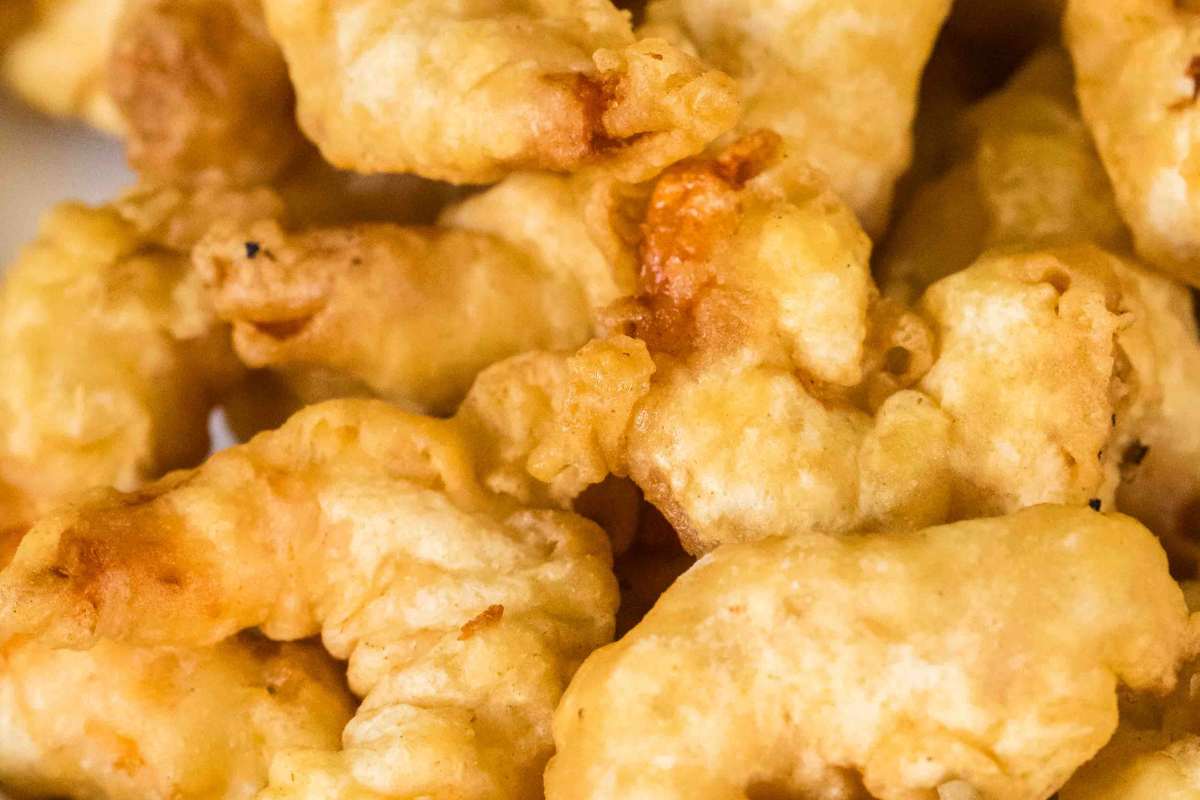
Love,


